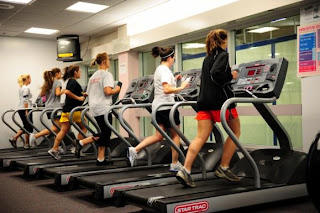 I am having the pleasure of attending St. Mary’s School for another year for field experience required in EDU 355. The first day back I had the opportunity to meet the Physical Education teacher, Mr. Mack. He gave us a warm welcome and being a product of SUNY Cortland expressed his support to guide and help out with anything we needed to make sure we have an excellent learning experience while attending St. Mary’s School. The students in the Friday morning class were 2nd graders. At St. Mary’s, there is a Jogging Club that sometimes takes part in Physical Education class. The 2nd graders were instructed to run or jog around the gym for 10-12 minutes. The remaining time would be used to free recess time where the students chose different activities to play.
I am having the pleasure of attending St. Mary’s School for another year for field experience required in EDU 355. The first day back I had the opportunity to meet the Physical Education teacher, Mr. Mack. He gave us a warm welcome and being a product of SUNY Cortland expressed his support to guide and help out with anything we needed to make sure we have an excellent learning experience while attending St. Mary’s School. The students in the Friday morning class were 2nd graders. At St. Mary’s, there is a Jogging Club that sometimes takes part in Physical Education class. The 2nd graders were instructed to run or jog around the gym for 10-12 minutes. The remaining time would be used to free recess time where the students chose different activities to play.  Prior to the class starting to run laps around the gym, Mr. Mack asked questions to check for understanding. These questions included; what does the class do before they start running? (Answer: Tie shoes with a double not.) What do you do if your body starts to hurt? (Answer: Walk till the pain go’s away and then start running again.) How many minutes are you running for? (Answer: In this case 10 minutes.) What are we not allowed to do? (Answer: Hold on to each other and don’t stop for any period of time.) The students knew all of these questions and were extremely well behaved. From what I had observed there is a direct relationship between the behavior of the students and how well they learn the material instructed to them.
Prior to the class starting to run laps around the gym, Mr. Mack asked questions to check for understanding. These questions included; what does the class do before they start running? (Answer: Tie shoes with a double not.) What do you do if your body starts to hurt? (Answer: Walk till the pain go’s away and then start running again.) How many minutes are you running for? (Answer: In this case 10 minutes.) What are we not allowed to do? (Answer: Hold on to each other and don’t stop for any period of time.) The students knew all of these questions and were extremely well behaved. From what I had observed there is a direct relationship between the behavior of the students and how well they learn the material instructed to them. I had asked Mr. Mack, would it be appropriate to try and have the students push themselves through their cramps when running. He explained that he wasn’t concentrated on the cardiovascular endurance rather the speed, agility and coordination of the students running at this particular level. Mr. Mack said he is “preparing the students for the higher levels of the jogging club.”
The jogging club sounds like a great idea. The one thing I would modify if I were to use this method in my classroom would be to relate some of the running skills into lead up games especially at this level. The extra time given to the students at the end of class can be reduced to have more time perform these lead up games and express important health information related to running.

No comments:
Post a Comment